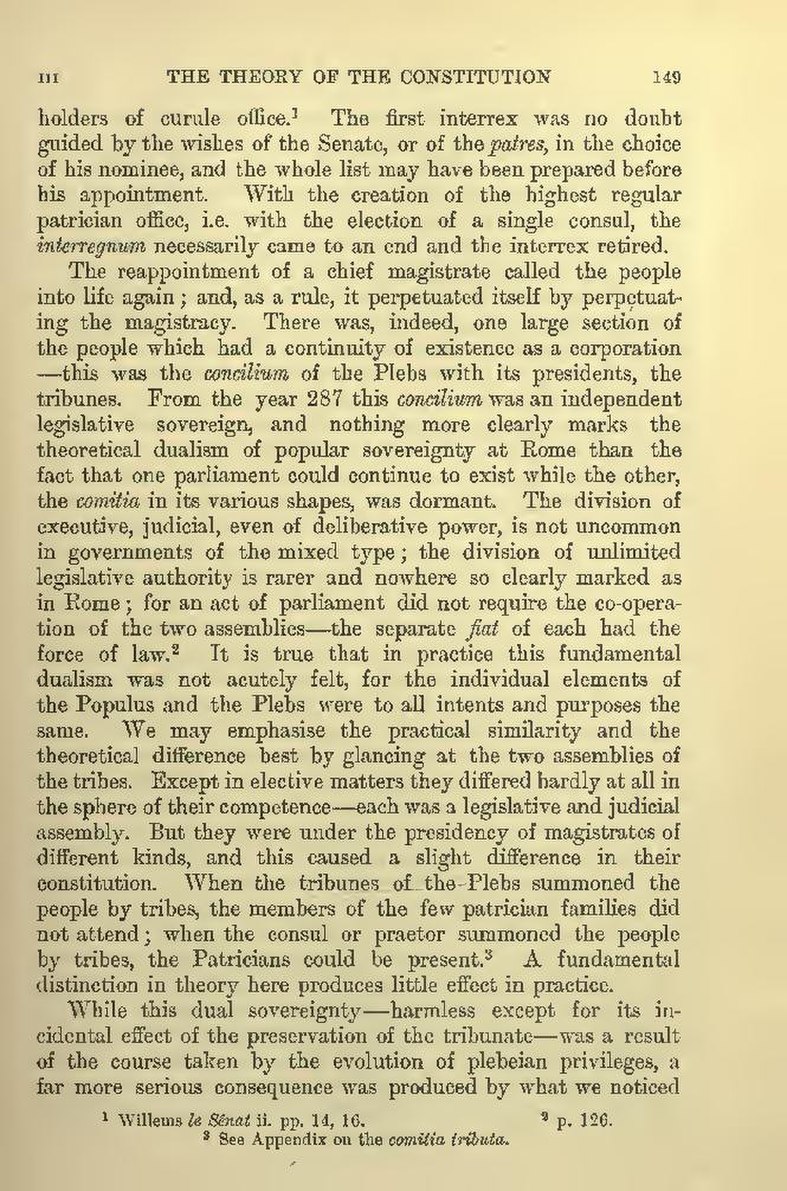holders of curule office.[1] The first interrex was no doubt guided by the wishes of the Senate, or of the patres, in the choice of his nominee, and the whole list may have been prepared before his appointment. With the creation of the highest regular patrician office, i.e. with the election of a single consul, the interregnum necessarily came to an end and the interrex retired.
The reappointment of a chief magistrate called the people into life again; and, as a rule, it perpetuated itself by perpetuating the magistracy. There was, indeed, one large section of the people which had a continuity of existence as a corporation—this was the concilium of the Plebs with its presidents, the tribunes. From the year 287 this concilium was an independent legislative sovereign, and nothing more clearly marks the theoretical dualism of popular sovereignty at Rome than the fact that one parliament could continue to exist while the other, the comitia in its various shapes, was dormant. The division of executive, judicial, even of deliberative power, is not uncommon in governments of the mixed type; the division of unlimited legislative authority is rarer and nowhere so clearly marked as in Rome; for an act of parliament did not require the co-operation of the two assemblies—the separate fiat of each had the force of law.[2] It is true that in practice this fundamental dualism was not acutely felt, for the individual elements of the Populus and the Plebs were to all intents and purposes the same. We may emphasise the practical similarity and the theoretical difference best by glancing at the two assemblies of the tribes. Except in elective matters they differed hardly at all in the sphere of their competence—each was a legislative and judicial assembly. But they were under the presidency of magistrates of different kinds, and this caused a slight difference in their constitution. When the tribunes of the Plebs summoned the people by tribes, the members of the few patrician families did not attend; when the consul or praetor summoned the people by tribes, the Patricians could be present.[3] A fundamental distinction in theory here produces little effect in practice.
While this dual sovereignty—harmless except for its incidental effect of the preservation of the tribunate—was a result of the course taken by the evolution of plebeian privileges, a far more serious consequence was produced by what we noticed
